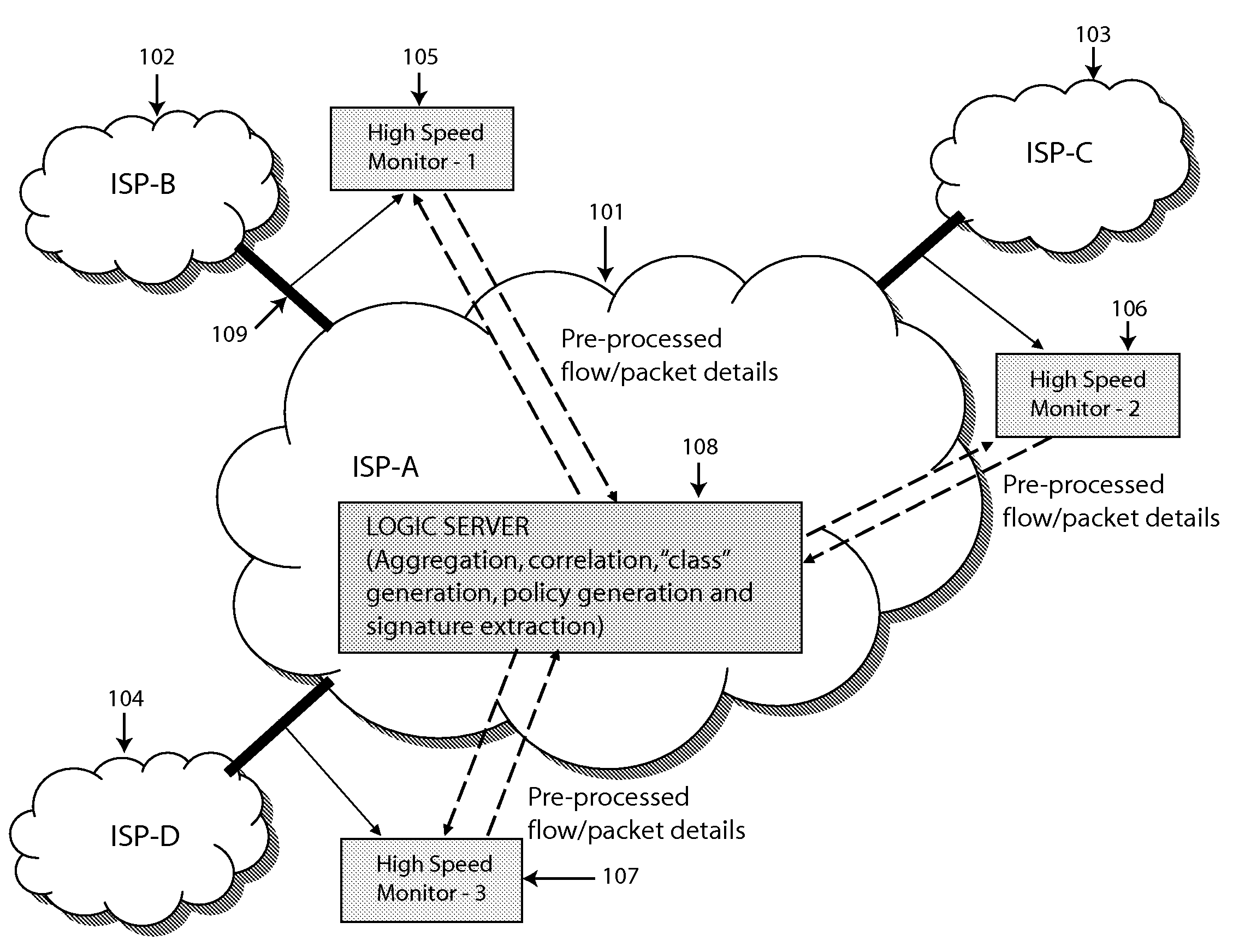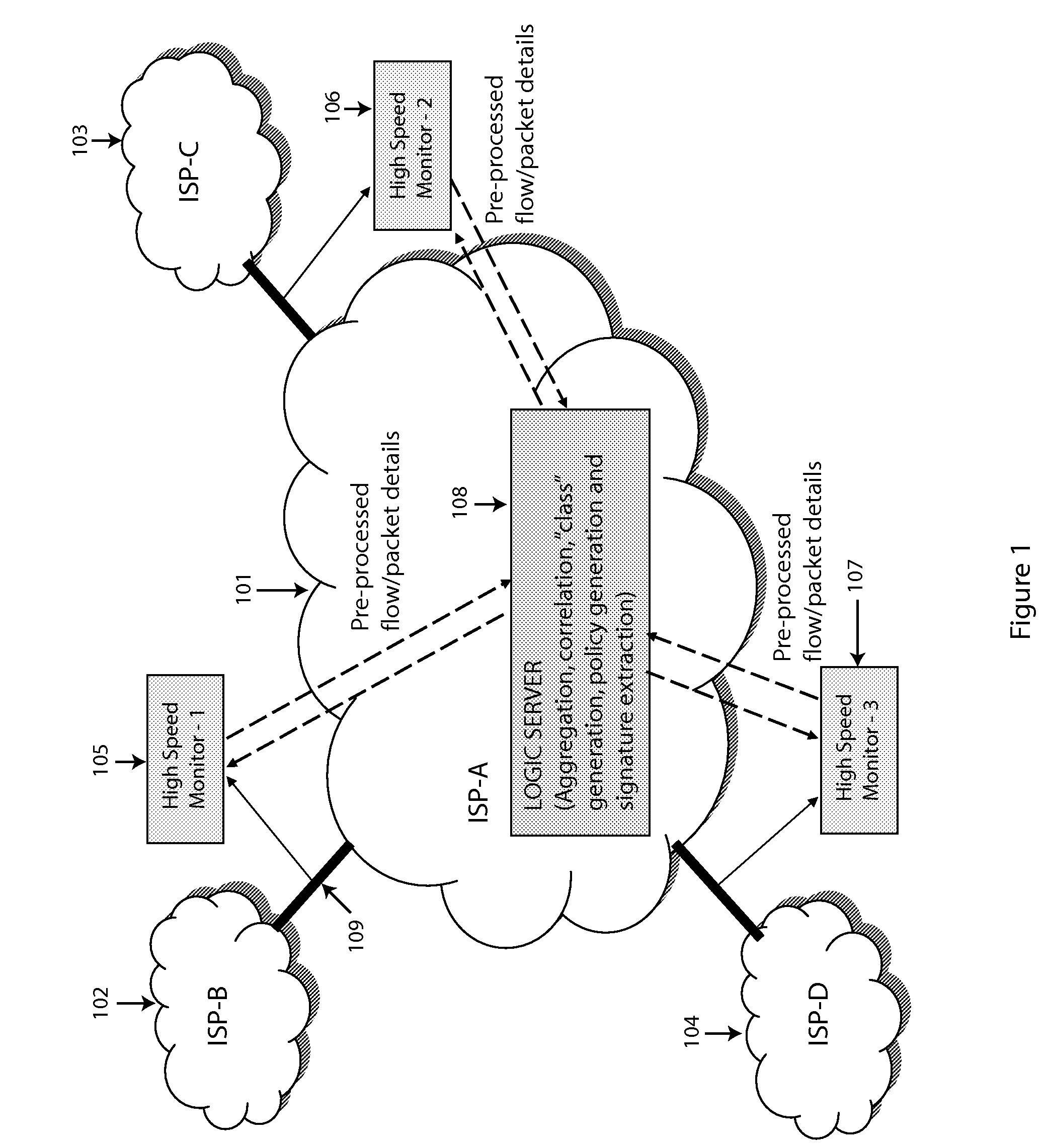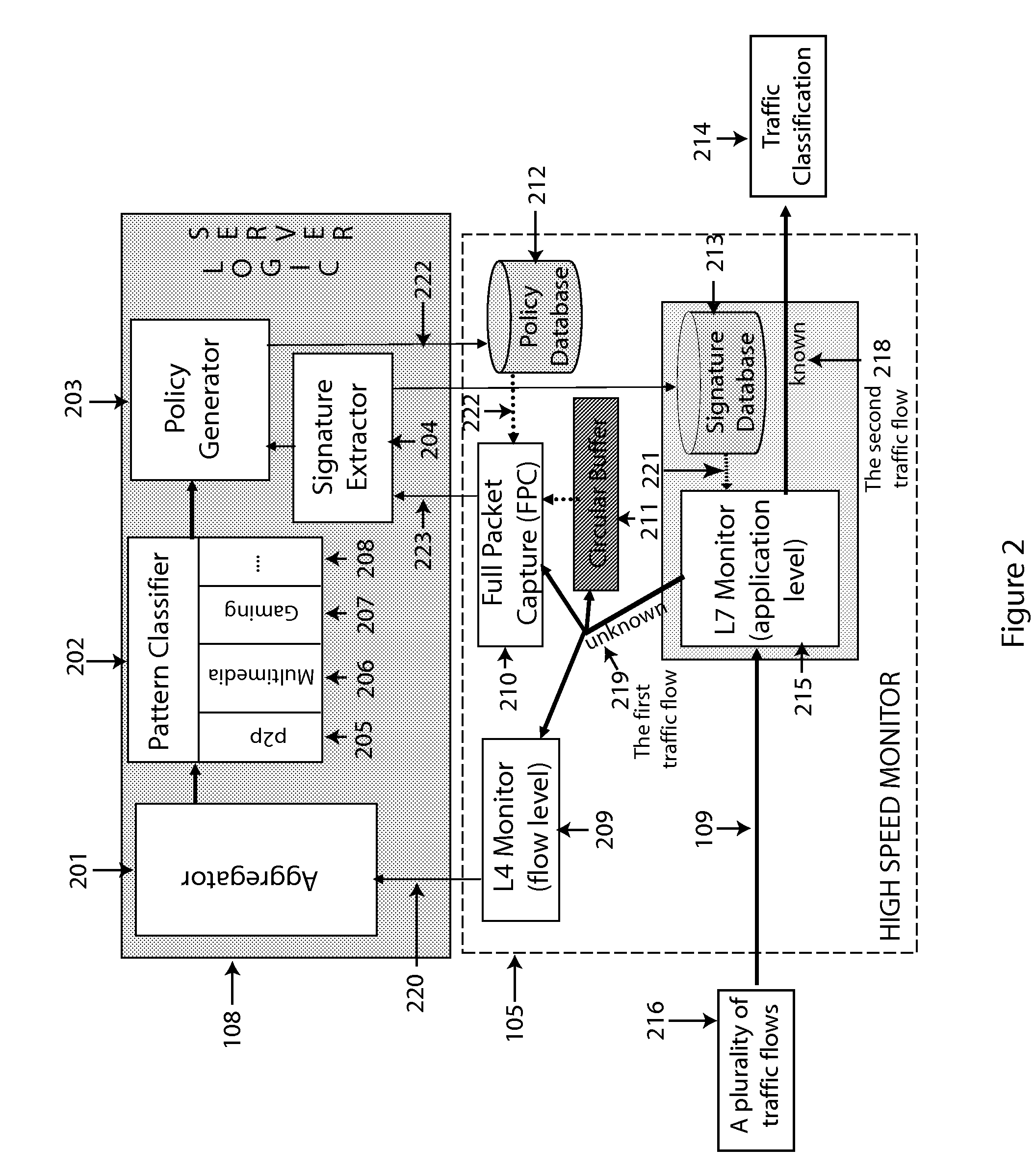System and method for network traffic management
a network traffic and management system technology, applied in the field of computer networks, can solve the problems of ineffectiveness, laborious and time-consuming process, and inability to meet the needs of users, and achieve the effect of reducing the number of ports, and improving the quality of services
- Summary
- Abstract
- Description
- Claims
- Application Information
AI Technical Summary
Benefits of technology
Problems solved by technology
Method used
Image
Examples
Embodiment Construction
[0026]Specific embodiments of the invention will now be described in detail with reference to the accompanying figures. Like elements in the various figures are denoted by like reference numerals for consistency.
[0027]In the following detailed description of embodiments of the invention, numerous specific details are set forth in order to provide a more thorough understanding of the invention. In other instances, well-known features have not been described in detail to avoid obscuring the invention.
[0028]FIG. 1 shows a system architecture diagram of a Self-Learning Traffic Classifier (SLTC) in a high speed network, for example, a tier-1 ISP network such as ISP-A (101) through ISP-D (104). The high speed network may have a hierarchical architecture and supports a layered network data model (e.g., the OSI model, the TCP / IP model, or the like). The SLTC is a distributed system with several high speed monitors (or HSMs) such as the high speed monitors (105)-(107). These monitors passive...
PUM
 Login to View More
Login to View More Abstract
Description
Claims
Application Information
 Login to View More
Login to View More - R&D
- Intellectual Property
- Life Sciences
- Materials
- Tech Scout
- Unparalleled Data Quality
- Higher Quality Content
- 60% Fewer Hallucinations
Browse by: Latest US Patents, China's latest patents, Technical Efficacy Thesaurus, Application Domain, Technology Topic, Popular Technical Reports.
© 2025 PatSnap. All rights reserved.Legal|Privacy policy|Modern Slavery Act Transparency Statement|Sitemap|About US| Contact US: help@patsnap.com



